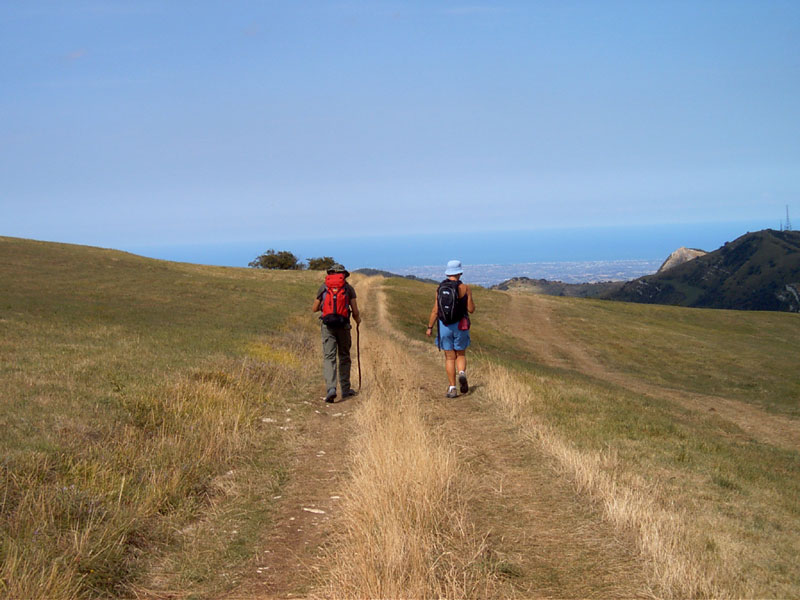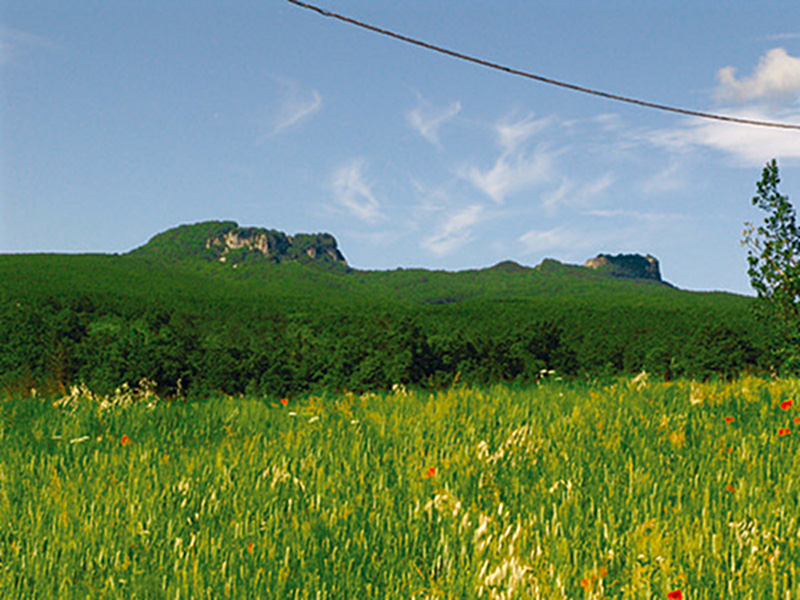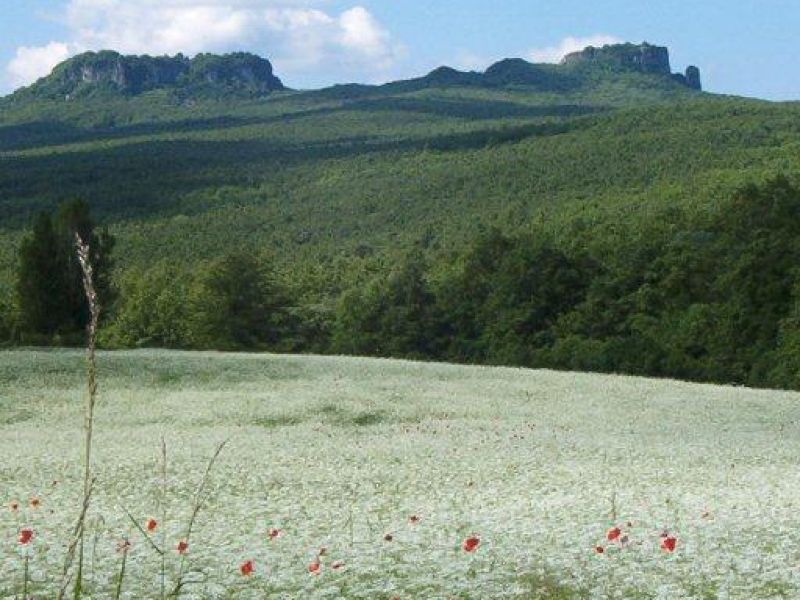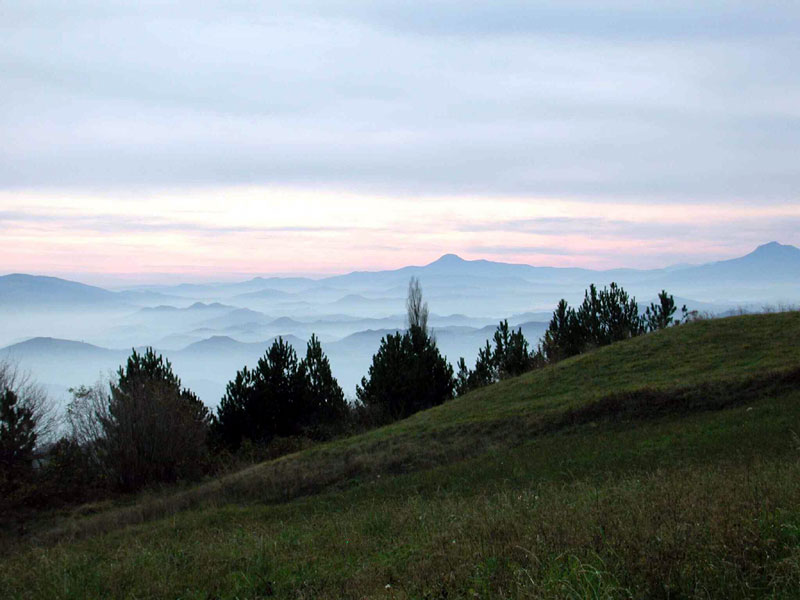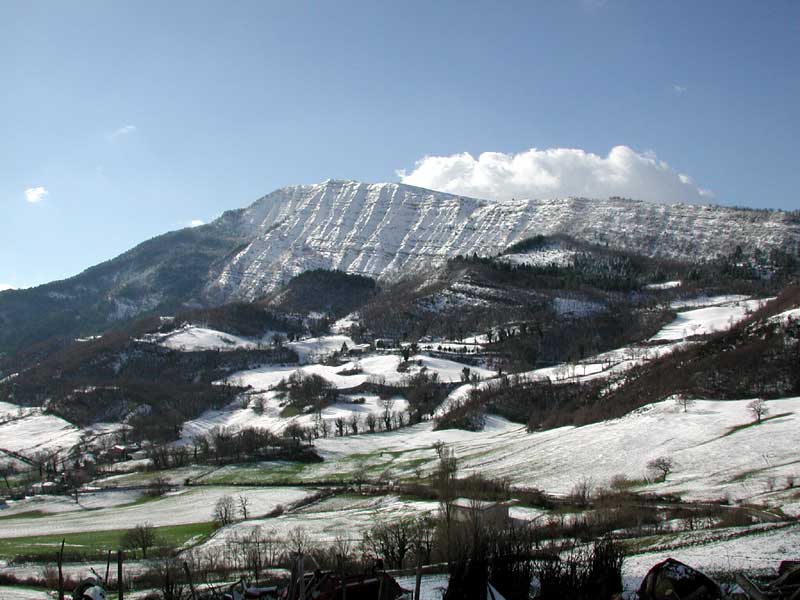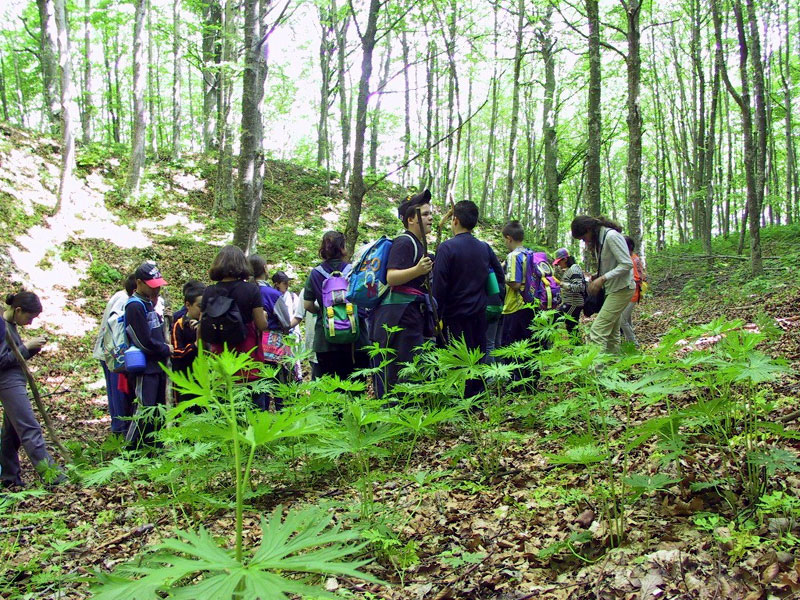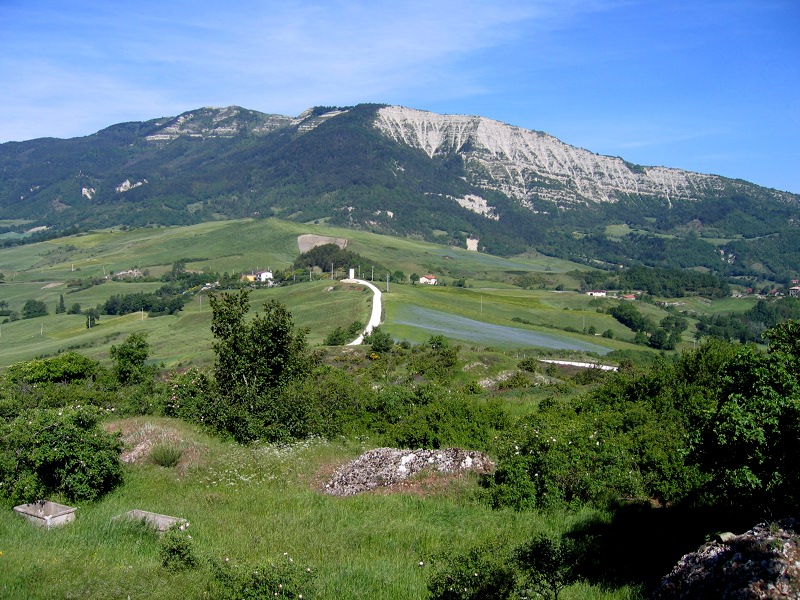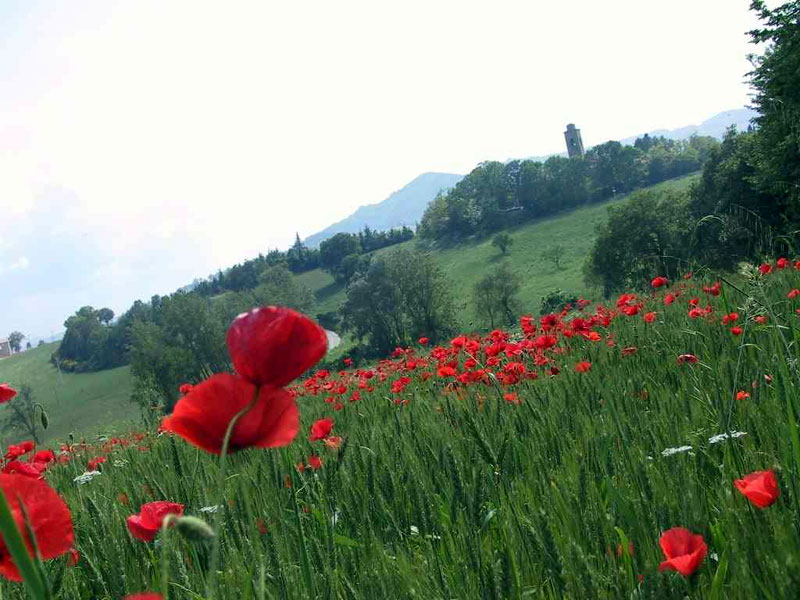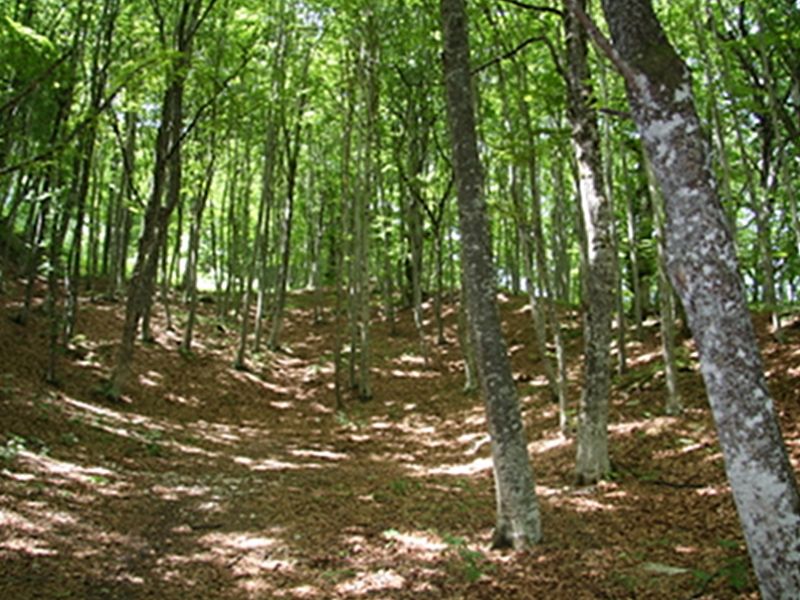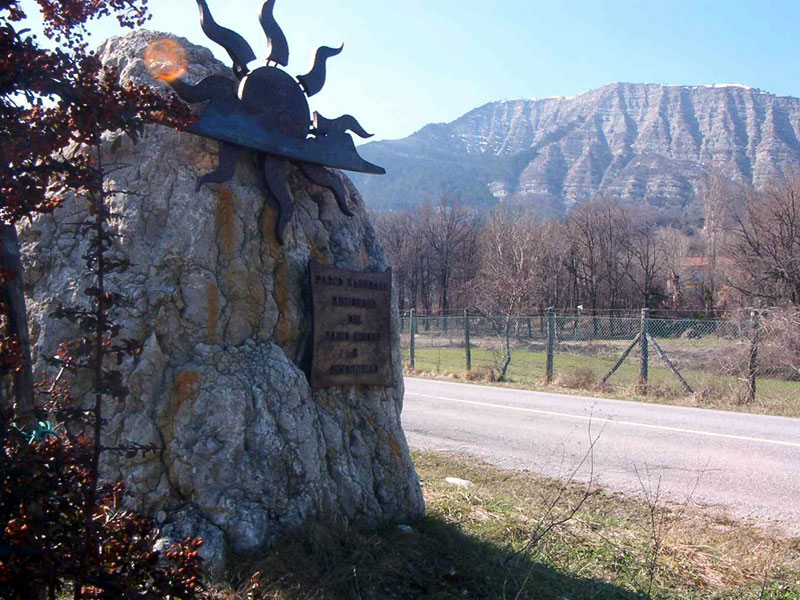Points of Interest
Sasso Simone (1,204m) and Simoncello (1,221m) Regional Park lies in the northernmost section of the Apennines of Tuscany and the Marches, in an area delimited by river Marecchia in the north-west, river Conca in the north-east, and river Foglia in the south, within the province of Pesaro e Urbino. Such area, covering 4,847 ha, includes two different mountains: Mt. Carpegna in the north-east and Sasso di Simone e Sasso Simoncello in the south-west. Within each of them, we can distinguish some sub-areas, homogeneous for typology and vegetation features.
The Sassi
The mountain group of Sasso Simone e Simoncello covers the southernmost section of the Park for about 2,400 ha. Here it is possible to find a vegetation characterized by very important features. This is demonstrated by the series of legislative measures issued both by Regione Marche and Regione Toscana in order to safeguard the whole area.
The Turkey Oak Woodland
It is above all from the edge of Sasso Simoncello plateau that you can observe the Turkey oak woodland of Sassi Simone e Simoncello, a small jewel of the Park extending itself from the foot of the two Sassi to Cantoniera Pass in Carpegna, developing from the 950 to the 1,150m of altitude.
It is a mesophile mixed Turkey oak woodland consisting of old coppice trees.
Meadows and Pastures
The meadows extending in the east are the result of deforestation activities carried out by man in order to obtain pastures or meadow-pastures. The area dominated by the summit of Mt. Cassinelle (916m) is crossed by trails no. 115, 116, and 123, and includes often charming gully areas where it is possible to observe multicolored geological outcrops, also towards the territory of Tuscany.
Mt. Carpegna
The second area of the Park is represented by Mt. Carpegna. It is a large area extending itself among the basins of the rivers Foglia, Marecchia, and Conca, and involving the towns of Pennabilli, Villagrande, Pietrarubbia, Carpegna, Frontino, and Piandimeleto.
Mt. Carpegna State-owned Forest
It covers the southern slope of the mountain for about 415 ha. In this area, the excessive exploitation of the ancient forest and the erosive action of the atmospheric agents, as well as the soil hydrogeological instability, led to its almost total denudation. For this reason, reforestation activities have been necessary since the 20th century.
Costa dei Salti
Another area of particular interest is the protected floristic area no. 14 called "Costa dei Salti", situated in the north-east of the state-owned forest. It is formed by gullies, fissures, and rather bare steep walls housing a rare vegetation of great botanical interest including Valeriana montana, Campanula medium, Campanula rotundifolia.
High-mountain Meadows
The summit of Mt. Carpegna is formed by a plateau covered by a thick semi-natural grassland maintained by man thanks to grazing activities and periodic cutting, mainly consisting of spontaneous and not very common species. The most represented grazing grass is Cynosurus cristatus, from which the name "cinosureti", used to define these meadows. Together with this species, also Stellaria graminea and Ranunculus apenninus are worth a mention.
Pianacquadio Beech Woodland
Surrounded by the high-mountain meadows of Mt. Carpegna, we will find a stretch of the ancient forest which covered in the past the summit of the mountain. Despite its limited surface area, it is a very important woodland, since it represents one of the few high-trunk beech woodlands which survived in the province of Pesaro Urbino, with centuries-old specimens.
Wildlife Park
The Wildlife Park is situated in loc. Pian dei Prati on the eastern border of the Turkey oak woodland of the Sassi. Along the road leading from Carpegna to San Sisto, you will find on your right you a secondary road. If you go along it for about 500 meters, you will get to the wildlife park. The park covers an area of 5.5 hectares and is characterized by the presence of meadows, hawthorn bushes, brooms, blackthorns, hedges and some thickets near torrent Seminico. The itinerary developing in the Wildlife Park consists of three main laps: first of all, you will learn about domestic animals such as goats, sheep and mules, that is animals that once were used by the peasant families for the daily support and to obtain milk, meat, and workforce. In the second lap, visitors are allowed to directly observe the wild animals that freely live in the Park area. Roe deer can eat in the clearings and in the undergrowth, while frogs, toads, and tritons find their habitat in the ponds along the trails. The route ends by getting to an observation point which is situated outside the Wildlife Park. If you are lucky and you respect the peacefulness of the place, you will see wild boars looking for bulbs, tubers, and acorns or having a healthy bath in the mud. Inside the park there are some observation points with benches, litterbins and many nests for sparrows which can find a lot of berries in the bushes of the area.
The Wildlife Park in Pian dei Prati opened in the summer 2000 and represents an ideal destination for schools and families, since it offers an itinerary on foot and without difficulties.
For further information, please contact Ente Parco del Sasso Simone e Simoncello by calling the number +39 0722 770073 or the Visitor Center of Ponte Cappuccini by calling the number +39 0722 75350.


